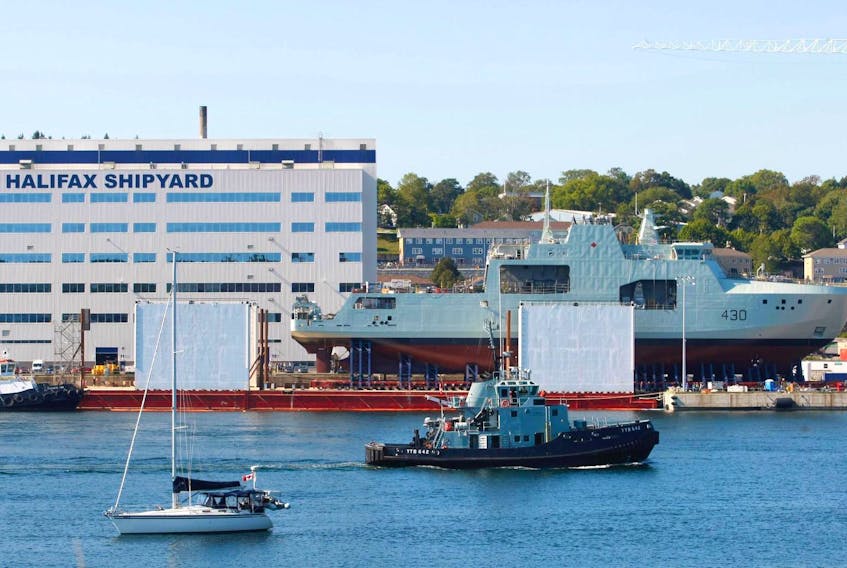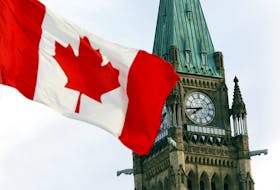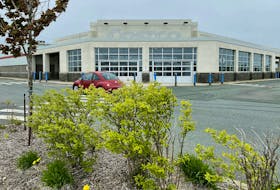“I think that traditionalists will say that's not really the type of ship the Coast Guard needs or wants, but I would say it's a very flexible ship.”
- Ken Hansen, retired navy commander
OTTAWA, Ont. — Ottawa’s purchase of two more Arctic and offshore patrol ships will likely lessen concerns about layoffs at Halifax Shipyard.
The federal government announced Wednesday that the Irving-owned yard will build two of the vessels for the Canadian Coast Guard on top of the six it is building for the Royal Canadian Navy.
Both Irving Shipbuilding and government officials say the move will eliminate the gap in production between the completion of the AOPS and the start of the $60-billion Canadian Surface Combatant build, avoiding layoffs.
The two new offshore patrol vessels will be built as part of a $15.7 billion package to augment the coast guard’s aging fleet. Seaspan’s Vancouver Shipyards will also build an additional 16 multi-purpose vessels to support a variety of missions, including light icebreaking, environmental response and offshore search and rescue, the government says.
The two AOPS are expected to cost $1.5 billion, and the other 16 vessels approximately $14.2 billion.
“The coast guard fleet is aging, some of the large vessels are 38 years old, basically almost at the end of life. We knew that the whole fleet needed to be replaced or repaired,” said Rural Economic Development Minister Bernadette Jordan, who announced the purchase in Dartmouth Wednesday afternoon.
“This is something that previous governments have put Bandaids on for years,” said Jordan, who represents South Shore St.-Margarets.
In a press release, Lana Payne, Unifor Atlantic regional director said the gap in production would have undoubtedly resulted in layoffs to workers just starting their careers.
“These newer hires represent the most diverse group in the yard including young workers, women, workers of colour and aboriginal workers,” she said.
In October, Marine Workers Federation Unifor Local 1 members launched a Ships Stay Here campaign calling on the federal government to address the gap in production between the two contracts, which it said was worsened by Ottawa’s reallocation of some maintenance work on the navy’s Halifax-class frigates to other yards.
“Our campaign was successful and in the end, it’s a win for us, for Halifax and for the whole province,” said Ryan LaPointe, Unifor-MWF Local 1 president.
Irving also issued a statement thanking the government for “their proactive approach to creating a sustainable shipbuilding industry in Canada.”
“Construction of two additional Arctic and offshore patrol ships for the coast guard along with continuous Halifax-class maintenance work will ensure steady workload at the Halifax Shipyard leading up to the construction of the Canadian Surface Combatants in 2023,” the statement reads.

This is the second time there has been an expansion to Irving’s AOPS program — in November Ottawa announced confirmation of a sixth ship to be added to the Harry DeWolf-class fleet, which officials said would reduce the forecasted production gap from 36 months down to 18.
At the time, an $810-million price tag was given for the cost of the sixth vessel, bringing the total ceiling for the contract to $2.8 billion.
Jordan said she is of the understanding that the two coast guard-bound AOPS will be constructed in the same 36-month timeframe and will not stall the beginning of the construction of the replacements for the navy’s frigates.
Retired navy commander and defence analyst Ken Hansen said the Arctic and offshore patrol ships are a useful vessel for the coast guard because of their capacity for multi-agency operations, especially as some of the organization’s attention becomes focused on the North.
“There’s change coming for the coast guard. There’s going to be a lot more activity in the north, driven partly by climate change and how that threatens communities and changes traffic patterns, but also because of the nature of the relationship in the security field between the coast guard and navy,” Hansen said.
“I think that traditionalists will say that’s not really the type of ship the coast guard needs or wants, but I would say it’s a very flexible ship.”
As for whether it’s the best use of resources, David Perry, senior analyst with the Canadian Global Affairs Institute, said it’s likely federal officials looked at the issue more holistically, with heavy consideration given to the benefits of keeping Irving’s production line hot and their workforce and skill set current as they begin construction on the most expensive procurement in Canadian history.
“What’s happening is (the Coast Guard) is getting their core fleet renewal plans addressed and they’re kind of getting another couple of bonus ships that … I’m sure will be put to good use, while the government addresses some wider continuity of build issues with the National Shipbuilding Strategy,” he said.
The move raises questions about whether Ottawa can reasonably afford an extra $17 billion tacked on to a shipbuilding strategy that will already cost taxpayers tens of billions of dollars.
“If you’re going to approve more construction, you have to ask where the money is coming from,” Hansen said. “At the moment I don’t see anyone saying they’re going to be drawing down on the funds for the other building programs, but time will tell.”
With the current state of the navy and coast guard vessels, Jordan asked whether Canada can afford not to invest in ensuring a functioning fleet.
“We’re a maritime nation,” she said. “We need to make sure that the people who work on these ships, who provide a valuable service, have what they need.”
RELATED: Sixth Arctic and offshore patrol ship about readiness, not fairness, experts say









